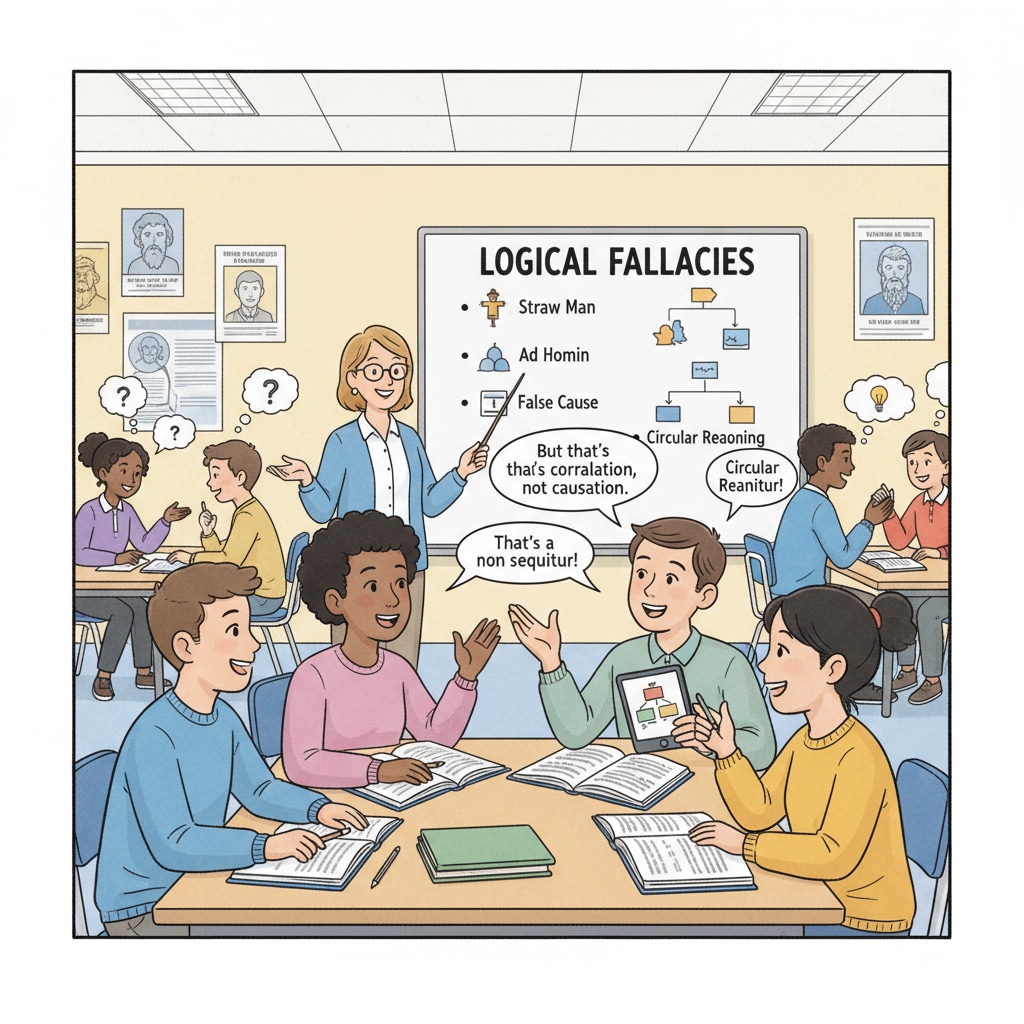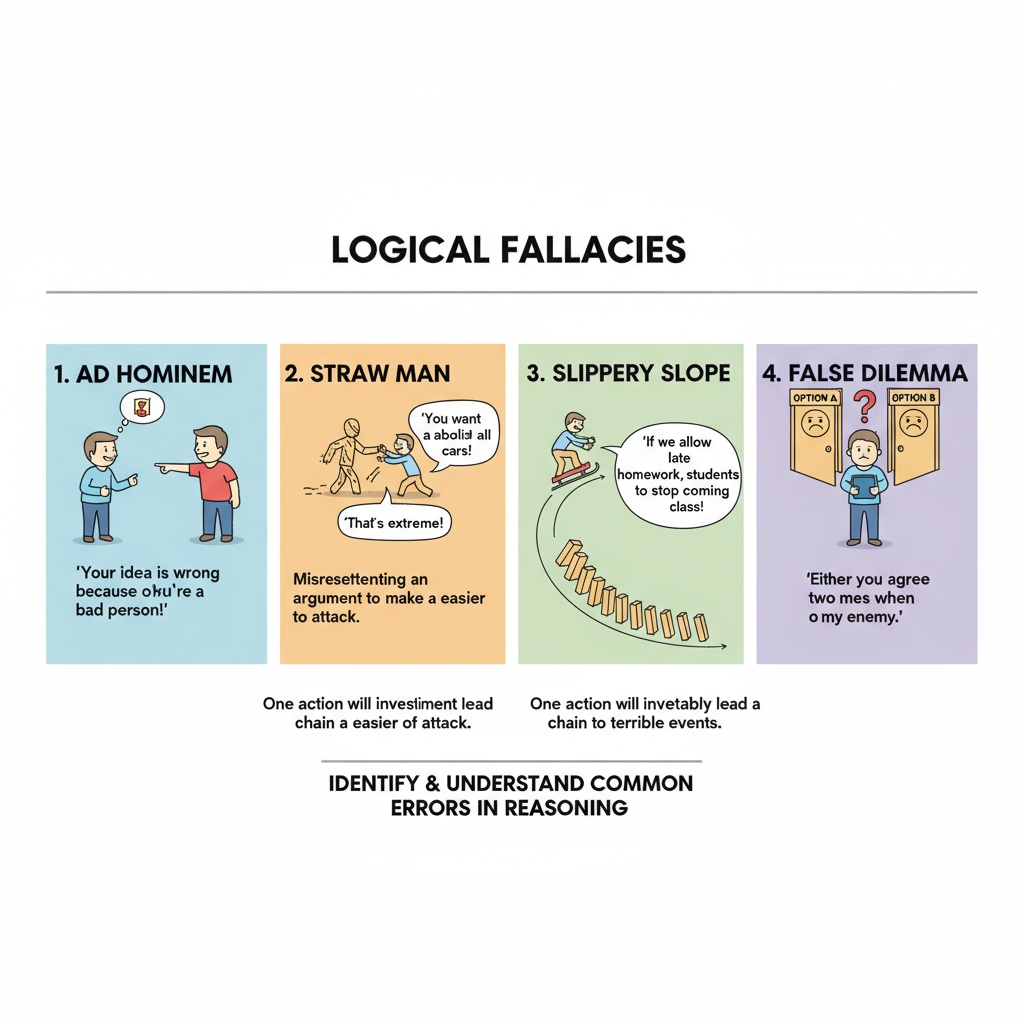In an era rife with information overload and the constant barrage of diverse opinions, the concepts of logical fallacies, critical thinking, and manipulation detection have become indispensable for high school students. As they navigate through a sea of information, the ability to distinguish sound reasoning from fallacious arguments is crucial. This is where the introduction of logic fallacy courses in high school education comes into play.

The Cognitive Challenges in the Information Age
Today’s high school students are exposed to an overwhelming amount of information from various sources, such as social media, the internet, and traditional media. This information is often presented in a way that can be misleading. For example, confirmation bias, a common cognitive trap, leads students to accept information that aligns with their pre-existing beliefs while ignoring contradictory evidence. As a result, they may form opinions based on incomplete or inaccurate information.
The Role of Logical Fallacies in Critical Thinking
Logical fallacies are errors in reasoning that can undermine the validity of an argument. By learning about logical fallacies, students can develop critical thinking skills. For instance, the ad hominem fallacy, where an argument attacks the person rather than the argument itself, can be easily identified. This knowledge empowers students to question the credibility of arguments and make more informed decisions.

Moreover, understanding logical fallacies helps students in constructing their own arguments. They can avoid making common mistakes and present their ideas in a more coherent and logical manner. This is not only beneficial for academic pursuits but also for their future in the professional world.
In conclusion, the inclusion of logic fallacy courses in high school education is not just an option but a necessity. By equipping students with the knowledge of logical fallacies, critical thinking, and the ability to detect manipulation, we are empowering them to become informed, rational, and independent thinkers in a complex world.
Readability guidance: This article uses short paragraphs to enhance clarity. Each section focuses on a key aspect, and lists could be further developed to break down complex ideas. The use of external links provides additional resources for readers. Transition words like ‘for example’, ‘as a result’,’moreover’ are used to create a smooth flow of ideas.


